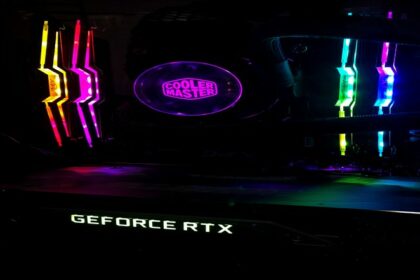There is always a fixed number of RAM slots you can have for a specific PC build and it all depends on the motherboard. Usually, it depends on the size of your build whether it is an ATX, micro-ATX, or mini-ATX.
Some small builds have 4 slots but you have to be sure if you have some RAM slots available if you want to add more RAM to your PC.
This guide will show you how to check your PC’s specifications so that you do not have to open your PC case up to answer the question: “How many RAM slots do I have?”
What Are DIMM Slots?
DIMM stands for “Dual In-line Memory Module” which are slots for RAM modules and nothing else.
The number of RAM slots you have is the same as how many DIMM slots you have, so what you actually need to determine is how many DIMM slots you have. Once you find this answer, you know how many RAM slots you have.
These DIMM slots are found on your PC’s motherboard and the slots depend on the type of motherboard you currently have. Most motherboards have 4 DIMM slots unless you have a mini-ATX build.
Older motherboards should also have 4 DIMM slots but it probably only supports older RAM models as well.
It is best to check what RAM is compatible with my PC first if you are deciding to add more RAM slots in the future as you might be buying the older RAM models that support your PC build.
Checking the Specifications of Your Motherboard

To check the number of DIMM slots you have, you can open Cmd.exe by opening the app on your Windows PC. Just search “Cmd” or the command prompt on your Windows search box and it should show up. After opening the command prompt, type “wmic baseboard get product,Manufacturer” and you will find your computer’s current motherboard.
Search for the specifications of your motherboard through the brand’s website. If you are looking to add more RAM, remember how many RAM sticks you have installed on your PC.
Anything purchased with “(dual)” is most likely using already two slots.
For example, a 16GB (dual) DDR4 3800 G.Skill Trident Z Neo, CL18 will already consume two DIMM slots because this is basically 2 pieces of an 8GB 3800 DDR4s, hence the word dual.
Checking your RAM type is important if you are just looking to add more RAM to your existing build. This is common if you want to improve your RAM for better performance or for streaming.
It is best to go for a similar brand but the priority is pairing them all with the same RAM speed and Cas latency.
ATX vs Micro-ATX vs Mini-ATX DIMM Slots

Just to give a brief description about the differences in size, the ATX is the biggest or standard build while micro-ATX is the second smallest. Mini-ATX is the smallest one and it is significantly smaller than the micro-ATX build.
The usual differences among the three follow the rule “the smaller the build, the cheaper it is”.
There are some variations that do not follow that rule and because you are sacrificing performance over the size of the build. If you want the best-performing motherboard on a mini-ATX build, you will end up paying more than just going for an ATX build.
Since motherboards have 4 DIMM slots, the mini-ATX motherboards usually only support 2 DIMM slots.
With newer versions, some of them support 4 DIMM slots but still perform less than their ATX counterpart and it costs a little more. Other than the difference in DIMM slots, you will not be able to use multiple GPUs on both micro-ATX and mini-ATX builds.
Dual-channel is supported in mini-ATX builds so getting two sticks of RAM is always better than getting one with the same capacity. In general, you would not need more than 2 pieces of RAM on any build that is why people opt to save money by building smaller PCs.
Streamers and gamers can live with 16GB of memory as long as they do not have more than 8 instances running that consume a lot of memory. Artists and editors usually need more than 16GB of RAM when rendering. Even 32GB of RAM might not be enough for the complexities of their work so they often get the best performing PCs out in the market.
Conclusion
Generally, you only need 2 to 4 DIMM or RAM slots for your build if you are just looking to play games.
Even the games with the highest system requirements such as the latest AAA games and VR games will only require at least 16GB of RAM.
If you plan on opening a lot of programs in the background while streaming, you could benefit from getting more RAM but you would not want to overburden your PC as it might reduce the longevity of your parts.








